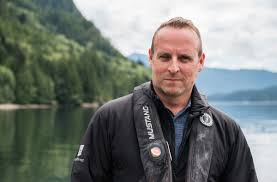Sick fish pictures used to attack salmon industry

SCOTTISH salmon farmers\’ battle to keep photographs intended for the Fish Health Inspectorate out of the public eye has been revealed by the government.
The pictures of diseased fish, from official fish health inspections, have been seized on by anti-salmon farm campaigners and the angling lobby as a means of attacking the industry.
Campaign groups used Freedom of Information rules to persuade government agency Marine Scotland to publish the images, which salmon companies say are misleading.
Scottish salmon farmers have already committed to publishing salmon mortality data on a farm-by-farm basis since 2018, and have been reporting on lice levels for a number of years.
In an email to Marine Scotland last year, Mowi Scotland’s director of communications, Ian Roberts, explained why the Ferret website’s publication of the photos was damaging.
‘It is rare that today’s reader delves below the shock and horror headlines,’ he wrote. \’The risk of people turning away from a healthy food such as salmon as a reaction to irresponsible use of photos for the sole purpose of creating fear in the consumer is a risk to health.
\’I ask you to consider this position for future Freedom of Information requests that may create unnecessary confusion or fear about consuming healthy Scottish seafood.\’
Mowi Scotland’s farming operations director, Gideon Pringle, told the Ferret : ‘These select fish have been photographed only because they represent rare veterinary cases, and do not represent the general fish population.
‘In the year to date, 96 per cent of our harvested fish have been graded as superior, great looking salmon.
‘At any farm, farmers may sometimes see animals in poor health, but do everything they can to avoid it – and like all farmers, we care passionately for the health and welfare of our fish.’
Scottish Sea Farms said farmed salmon have a much better survival rate than wild stocks, and the species was ‘highly complex’.
‘In the wild, fewer than five per cent return as adults,’ said Scottish Sea Farms head of fish welfare, Dr Ralph Bickerdike.
‘At many of our farms we are now achieving survival rates of 87 per cent and higher, and we are working hard to boost these rates even further.
‘There’s much still to be learned and the marine environment continues to present new challenges to fish health.
‘Photos such as these are one of the ways we are working with regulators to increase understanding of those challenges.’
The Scottish Salmon Company also said the pictures misrepresented its activities.
‘We take the health and welfare of our fish very seriously and adopt a best practice approach to animal husbandry,’ said a company spokesperson.
‘Like any farming there can be occasional health issues. While images are now published by Marine Scotland, these will in the main be diagnostic images of individual cases and are not representative of our operations.\’

